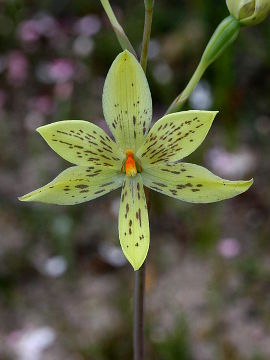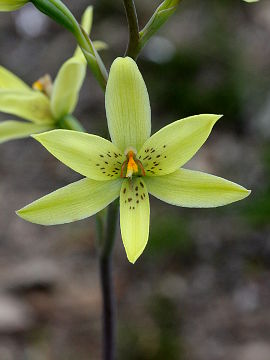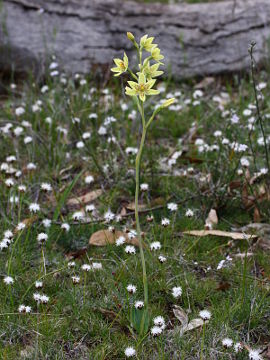Custard Orchid
Thelymitra villosa
Synonyms
- Thelymitra pardalina
Notes
This widespread but uncommon Sun Orchid can be found in south-western WA between Geraldton and Israelite Bay, usually within about 100 km of the coast. The petals and sepals are pale yellow in colour with a characteristic, highly variable pattern of brown blotches. The flower stem is fairly tall with a short, broad leaf at the base and up to 20 individual flowers. Due to their large size and yellow flowers, Custard Orchids are generally easy to find and can be seen from quite some distance.
The Custard Orchid flowers in early to mid spring and usually grows in woodland and shrubland, often in winter-wet flats or moist areas around granite outcrops. From the similar Freckled Sun Orchid (Thelymitra sargentii), Tiger Orchid (Thelymitra tigrina) and Leopard Orchid (Thelymitra benthamiana) the Custard Orchid is readily distinguished by the unique shape and colour of its column.
Photos










References
- Thelymitra villosa in the Australian Plant Name Index
- Thelymitra villosa in the Atlas of Living Australia
- Thelymitra villosa in the Western Australian FloraBase